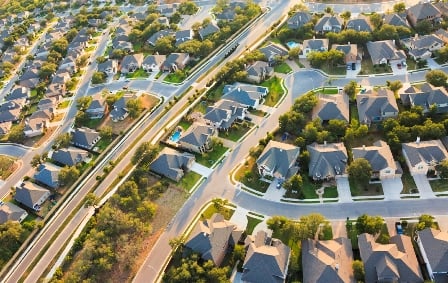Housing inventory remains top concern for Freddie… Slip for new home building… 2.2 billion sheets of mortgage docs are harming the environment…

Housing inventory remains top concern for Freddie
Home sales for 2017 may fail to reach the levels of last year due to a lack of supply.
Housing inventory is the top concern of Freddie Mac in its latest monthly outlook with tight supply increasing prices which in turn are outpacing incomes. As interest rates rise, affordability is a real challenge for prospective homebuyers.
Freddie Mac’s data shows that starter homes is a key sector where inventory is tight, reducing the opportunities for first-time buyers. Sellers are dissuaded from listing their home fearing that they will not find something they can afford.
“If inventory continues to remain tight, home sales will likely decline from their 2016 levels. As we enter the spring home buying season, all eyes are on housing inventory and whether or not it will meet the high demand," warned Freddie Mac’s chief economist Sean Becketti.
Slip for new home building
Housing starts slipped 6.8 per cent in March following an elevated February reading, however year-over-year figures are up.
Data from the HUD and Commerce Dept. shows that there were 1.22 million units started in March on a seasonally-adjusted annual rate, 8.1 per cent above the pace of a year earlier.
Single-family starts dropped 6.2 per cent while multifamily production was down 7.9 per cent. Only the Northeast saw a gain (up 12.9 per cent) while the West and MidWest dropped 16 per cent and the South was down almost 3 per cent.
“The three-month moving average for single-family starts has reached a post-recession high, which shows that this sector is continuing to firm,” said NAHB Chief Economist Robert Dietz. “We can expect further gains in single-family production throughout the year, while multifamily starts should level off.”
2.2 billion sheets of mortgage docs are harming the environment
Few mortgage professionals would list the paperwork involved in a new loan origination as their favorite part of the job and borrowers are unlikely to be fans either.
Now a new study to tie-in with Saturday’s Earth Day shows that the process of applying for a home loan is also a negative for the environment.
The report calculates that borrowers may encounter more than fifty documents as part of their mortgage application process. With around 7.8 million loans a year, that means 2.2 billion sheets of paper, or 264,000 trees!
“Borrowers frequently express how overwhelmed they are by the sheer volume of mortgage paperwork,” said Michael Jensen, co-founder of mortgage site FREEandCLEAR which calculated the process’ impact. “In recognition of Earth Day we wanted to explore the environmental side of the issue and the results were eye-opening.”
Home sales for 2017 may fail to reach the levels of last year due to a lack of supply.
Housing inventory is the top concern of Freddie Mac in its latest monthly outlook with tight supply increasing prices which in turn are outpacing incomes. As interest rates rise, affordability is a real challenge for prospective homebuyers.
Freddie Mac’s data shows that starter homes is a key sector where inventory is tight, reducing the opportunities for first-time buyers. Sellers are dissuaded from listing their home fearing that they will not find something they can afford.
“If inventory continues to remain tight, home sales will likely decline from their 2016 levels. As we enter the spring home buying season, all eyes are on housing inventory and whether or not it will meet the high demand," warned Freddie Mac’s chief economist Sean Becketti.
Slip for new home building
Housing starts slipped 6.8 per cent in March following an elevated February reading, however year-over-year figures are up.
Data from the HUD and Commerce Dept. shows that there were 1.22 million units started in March on a seasonally-adjusted annual rate, 8.1 per cent above the pace of a year earlier.
Single-family starts dropped 6.2 per cent while multifamily production was down 7.9 per cent. Only the Northeast saw a gain (up 12.9 per cent) while the West and MidWest dropped 16 per cent and the South was down almost 3 per cent.
“The three-month moving average for single-family starts has reached a post-recession high, which shows that this sector is continuing to firm,” said NAHB Chief Economist Robert Dietz. “We can expect further gains in single-family production throughout the year, while multifamily starts should level off.”
2.2 billion sheets of mortgage docs are harming the environment
Few mortgage professionals would list the paperwork involved in a new loan origination as their favorite part of the job and borrowers are unlikely to be fans either.
Now a new study to tie-in with Saturday’s Earth Day shows that the process of applying for a home loan is also a negative for the environment.
The report calculates that borrowers may encounter more than fifty documents as part of their mortgage application process. With around 7.8 million loans a year, that means 2.2 billion sheets of paper, or 264,000 trees!
“Borrowers frequently express how overwhelmed they are by the sheer volume of mortgage paperwork,” said Michael Jensen, co-founder of mortgage site FREEandCLEAR which calculated the process’ impact. “In recognition of Earth Day we wanted to explore the environmental side of the issue and the results were eye-opening.”



